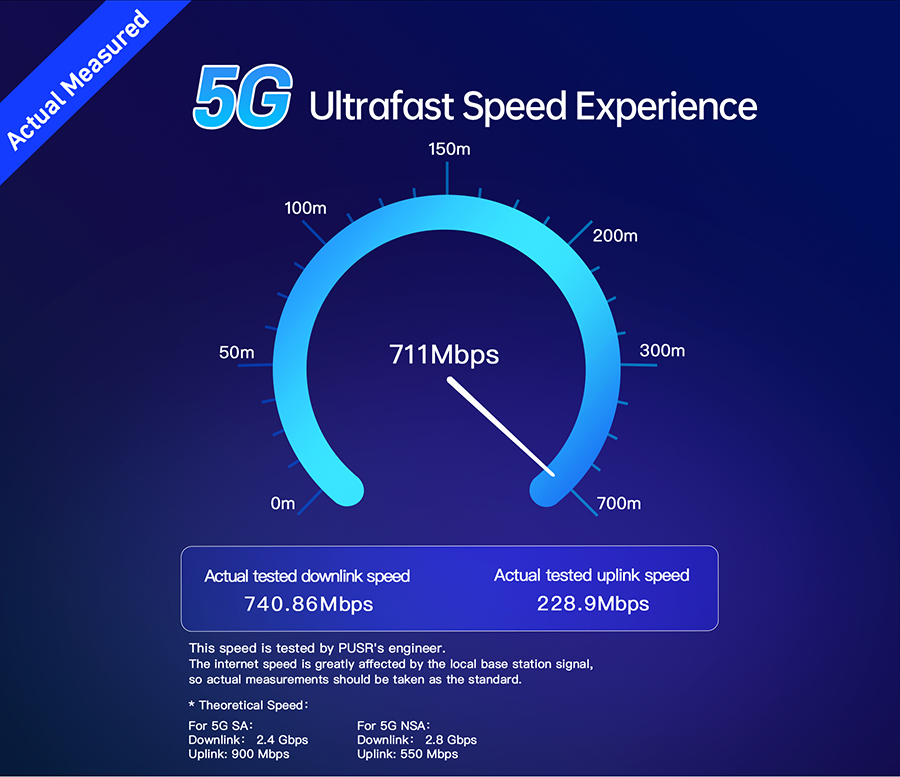First, we provide a picture to show the speed comparison of 2G, 3G, 4G and 5G.
The speed of 5G is comparable to that of Cheetah.
In fact, according to theoretical data, the transmission rate of 5G can reach 1GB/s, which is more than ten times faster than the current 4G.So, what changes can 5G make in technology to make it "qualitative" leap over the speed of 4G? In addition to faster speed, what are the improvements of 5G compared to 4G?
Let's take a look at what secrets 5G hides compared with 4G?
As we all know, the signals we use now are transmitting and receiving electromagnetic waves.However, due to the limited frequency of electromagnetic waves, it uses different working modes of electromagnetic waves and does not interfere with each other.Therefore, the electromagnetic waves of Global Consulting Co., Ltd. are equally divided into different uses, taking frequency as an example, low frequency is used for long-distance navigation.Uhf is applied to waveguide communication.
However, it should be noted that millimeter wave can bring greater transmission speed.But millimeter wave also has fatal disadvantages-millimeter wave is greatly attenuated in the air, and its diffraction ability is weaker.In short, millimeter-wave signals are difficult to achieve through walls.
In order to solve this problem, we need to use micro-base station technology. Acquire a balanced signal of a micro base station user.As mentioned before, 5G millimeter wave is very weak in the air because of its poor penetration and attenuation.If 5G has been used in the past, the "Hongji base station" used during 3G and 4G will provide enough protection signals to be slightly away from users. .
In response to this difficulty, 5G began to use new base stations, micro base stations. As the name implies, the base station made by the micro base station is small enough.
5G millimeter wave makes the antenna reach millimeter level. Massive MIMO increases bandwidth capacity by tens of times.
In the 5G era, the "mm" antenna has a great advantage, that is, putting more antennas in a small base station.This is the use of MIMO technology, the full name is multi-input-multi-output, which means "MIMO", that is, the base station antenna is getting bigger and bigger.The ability to receive mobile phones is becoming stronger and stronger, receiving objects from multiple antennas.
5G is an enhanced version of large-scale MIMO technology because it can be placed in more antennas.Although MIMO technology has been used in the 4G era, 4G antennas are mainly used in the 4G era.Most use four antennas and eight antennas.
In the 5G era, when a 30 GHz frequency base station can use 256 antennas to send and receive signals at the same time,5G could add tens of thousands or more to mobile network capacity.
Signals such as flashlights "hit" users accurately, although the problems of signals and antennas have been solved.But 5G has a problem that bothers us, that is, when we can't radiate signals like 4G, the coverage is very wide.But the utilization rate is very low. "Precision strike" can only be used for people in need and save resources. In layman's terms, 4G is like an electric light.After turning on the lights, no matter where the light is not needed, it will cover the "4G" lights, which will cause waste of resources to a certain extent.
By 5G, in order to solve this waste of resources, it began to use beamforming technology.

Look at Wikipedia's explanation: Beamforming is also known as beamforming and spatial filtering.Is a signal processing technique that uses an array of sensors to directly send and receive signals.By adjusting the phase parameters of the basic unit array, the beamforming technology can make the signal have certain perspective and constructive interference.And that signal is interfere at another point.
Beamforming can be used for both signal transmitters and signal receivers.Simply put, 5G is to turn the 4G lamp into a flashlight.If the black house uses a 5mm flashlight, it will not illuminate the whole house, but will look for a specific and desired direction.Another major aspect of D2D technology to enable point-to-point communication is the implementation of 5G D2D communication based on cellular networks, also known as proximity services.With this technique, user data can be transmitted directly between two terminals without the need for a base station.Using D2D technology, a stone can save a lot of air resources and reduce the pressure on the base station.However, you should not think that you can escape the "magic claws" of operators without transportation costs.Because the total signal control and resource allocation are still controlled by base stations, operators still have to pay for it.Generally speaking, although 5G is more than 1G, the content and progress of 1G are too much.
Although our 5G is a little far away from the stage of our daily life, it is now like the silence on the eve of a storm, and once 5G strikes, it will be like the silence on the eve of a storm.Driverless driving is closely related to our daily life, and the common 5G technology products will subvert our daily life.Of course, the most important thing is to speed up the network.